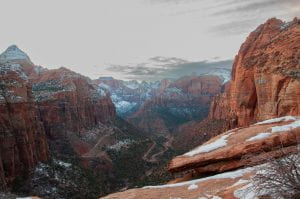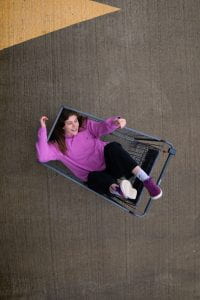For my STEP Signature Project, I traveled with a group of other students out to Nevada and Utah to practice photography. Along the way we visited Las Vegas, the Valley of Fire state park, Zion, and Bryce Canyon. We were led by Dr. Pat Whittington and Photographer Tony Small, who each provided me with helpful advice along the way.

The biggest change that occurred during this is becoming someone who considers themselves a photographer. Prior to this, I had no experience in photography. I’ve used my phones camera before, of course, but I never thought about many of the design choices that go into shooting a shot. I had no idea how to select the appropriate F-stop, ISO, or shutter speed to create the photo I wanted. I remember reading about how to use manual mode for the first time on the plane ride over! The difference between my photos before and after this trip are night and day.
There are plenty of experiences that I can point to where I feel like I developed as a photographer, but none standout more than the first night we shot in Vegas. Tony had us set up, and then asked us to shoot in manual mode. I remember my heart sinking. I had shot in manual mode for the first time the week before and every photo I took was overexposed. I really only had a vague idea of how to use my light meter.
I had nothing to worry about, everyone on the trip was extremely helpful. Tony and other experienced photographers on the trip answered my hundreds of questions extremely patiently. I truly only had a rudimentary understanding of the art form from reading about it. While none of my photos from Vegas became my favorite, that was the first time using my camera really clicked for me (Please excuse that TERRIBLE pun).

Another example of when this trip helped me improve as a photographer is the photo above. While working this area, I was extremely focused on the sunset and the range near the sunset. Tony came up to me and pointed out some of the nature just around me. He encouraged me to try to add a few other “background actors” to the sunset. I moved and re-framed the photo to capture the sagebrush and barrel cacti. I also captured the dark rocks the provide the photo some leading lines. This became one of my favorite photos of the trip. He taught me that framing is all about selecting what the subject is, but also adding in a few background actors when appropriate.
Ultimately, this trip was important to me because it helped me find a new passion in my life. Prior to this, I had never really found an art form that I found interesting. I could never paint or draw. I played instruments in high school, but never really loved it. Once I came to college that ended, and I found myself focusing almost exclusively on math and science. I love what I study, but I did feel like a part of myself was missing. I never found a way to express myself that I really enjoyed.
 This trip showed me that photography can be that for myself. My favorite example from the entire trip is “Desert Window” to the left. This photo has a deep meaning to me, and that alone tells me that this trip has had immense value to me. I loved working this shot, from the process on site to editing in Photoshop. More importantly, I love being able to create art and express myself. Its always been hard for me to find a way to do that in a way that felt right to me. Photography feels right. I hope to take this art form with me for the rest of my life.
This trip showed me that photography can be that for myself. My favorite example from the entire trip is “Desert Window” to the left. This photo has a deep meaning to me, and that alone tells me that this trip has had immense value to me. I loved working this shot, from the process on site to editing in Photoshop. More importantly, I love being able to create art and express myself. Its always been hard for me to find a way to do that in a way that felt right to me. Photography feels right. I hope to take this art form with me for the rest of my life.













